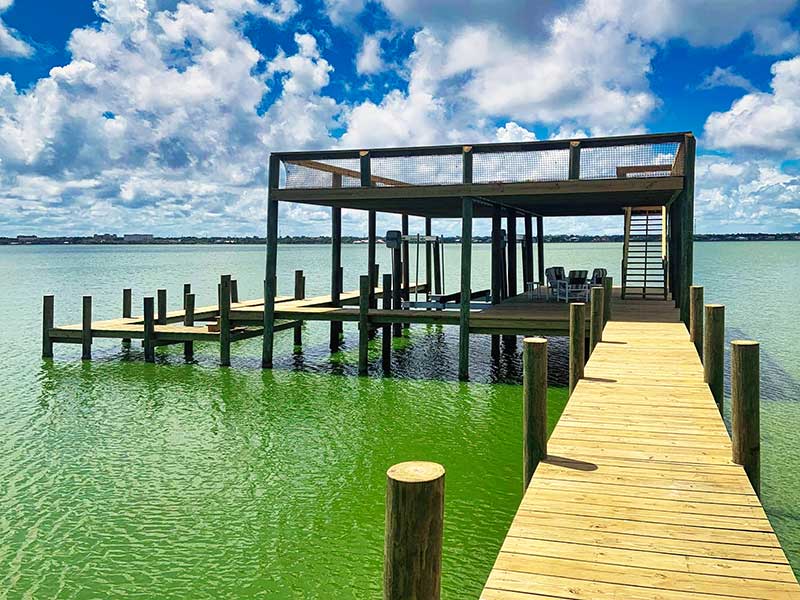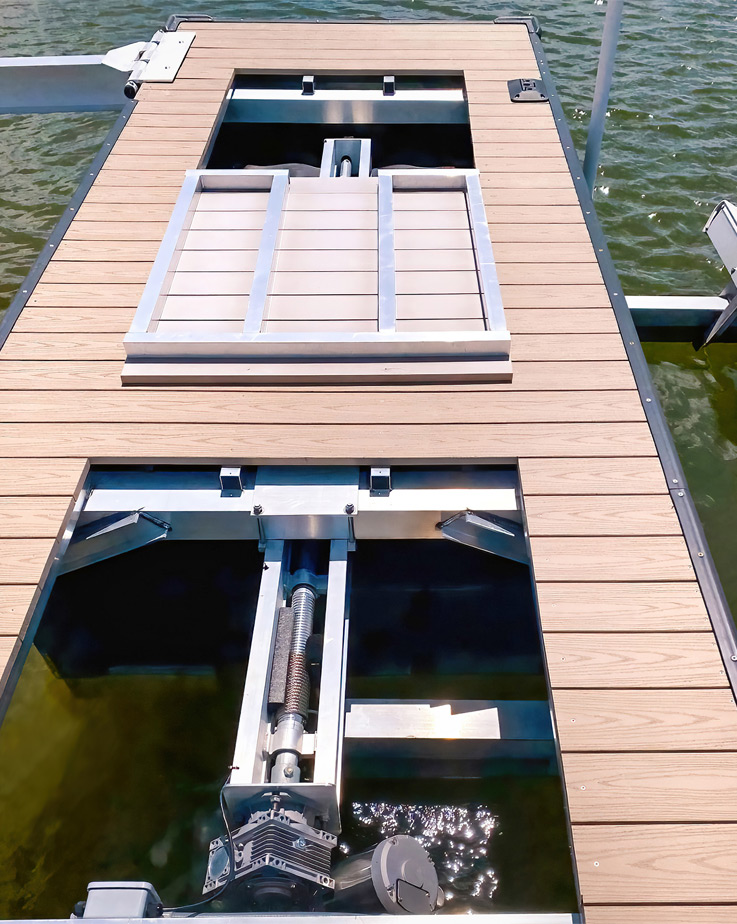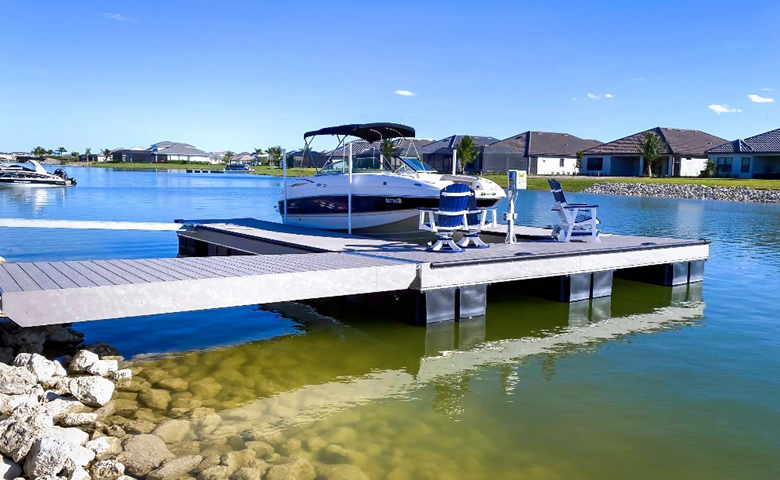Boating is a diverse hobby, with a variety of watercrafts each serving different purposes and experiences. Just as important as the boat itself is the boat lift – a crucial investment for protecting your vessel from wear and tear. In this article, we’ll explore different types of boats and some common boat lift options suited for each type. Keep in mind that this can vary considerably based on different types of water conditions so we highly recommend speaking to one of our experts to find the best options for your type of boat and water conditions.
For example, pile-mounted vertical lifts are favored for their simplicity, adaptability, and cost-effectiveness in lifting boats. Whereas, elevator lifts, being pricier, are opted for in situations where piling installation is either challenging or prohibited due to waterfront conditions. Then there are boathouse lifts that are specifically designed for use within boathouses, while Trident lifts are preferred for canal ends due to their unique capabilities and design features.
Fishing Boats
Fishing boats are designed for stability and functionality in various water conditions. They range from simple rowboats to larger, more sophisticated vessels equipped with fishing gear. For smaller fishing boats, a simple vertical lift or a cantilever boat lift would be sufficient. These lifts keep the boat out of the water when not in use, preventing hull damage. For larger fishing boats, considering weight and size is important, thus a heavy-duty hydraulic lift may be more appropriate.
Sailboats
Sailboats, with their deep keels, require special consideration when it comes to boat lifts. The lift must accommodate the depth of the keel and the height of the mast. A custom cradle lift is often recommended for sailboats. These lifts can be designed to match the specific dimensions of the sailboat, ensuring a secure and balanced lift. But what it really boils down to is making sure the right bunking options are being used.
For sailboats, the best boat lift bunking options usually involve custom solutions designed to accommodate the unique hull shape and keel of the sailboat. These options often include adjustable, full-length bunks that support the boat’s weight evenly, specialized keel racks for deep keel boats, and guide-ons to assist with positioning the boat correctly on the lift. It’s crucial to choose a bunking system that offers the right support and protection for your sailboat’s specific design and dimensions. For detailed recommendations and customized solutions, consulting with a reputable boat lift manufacturer like IMM Quality Boat Lifts or a marine construction expert is advisable.
Speedboats and Powerboats
Speedboats and powerboats are typically heavier and faster than other types of boats. For these boats, a hydraulic lift is often the best choice. Our vertical or elevator boats lifts are robust and can easily handle the weight of speedboats. They also offer quick and easy operation, which is convenient for boaters who are frequently taking their boats in and out of the water.
As far as bunking options are concerned, for speedboats and powerboats, the best boat lift bunking options are those that provide strong support while distributing the vessel’s weight evenly to prevent hull stress. Carpeted wooden bunks or those covered with marine-grade material are common, as they reduce abrasion and protect the hull’s finish. Adjustable bunks are ideal for accommodating the specific hull shape of each boat, ensuring a snug fit and stability. Some systems also offer guide-ons for easy boat positioning.
Pontoon Boats
Pontoon boats, known for their flat, stable decks, require a lift that can support their unique design. A pontoon lift, specifically designed for these types of boats, is ideal. These lifts support the pontoons evenly and ensure the boat remains stable while on the lift. Some pontoon lifts come with adjustable bunks to fit different pontoon widths, making them a versatile option.
For pontoon boats, the best lift bunking options are designed to support the unique structure of pontoons. These typically include dual or triple bunk systems that cradle each pontoon individually, distributing weight evenly and preventing stress on the pontoons. Adjustable, carpeted, or padded bunks are ideal to accommodate different pontoon designs and sizes, ensuring a secure fit and protection against scratches. For specific recommendations tailored to your pontoon boat, consulting with a reputable boat lift manufacturer or marine professional is recommended.
Personal Watercraft (PWC)
Personal watercrafts, such as jet skis, are smaller and lighter than traditional boats. A specialized PWC lift is the best option for these. PWC lifts are compact and can be either freestanding or attached to a dock. They make launching and retrieving PWCs quick and effortless.
Cabin Cruisers
Cabin cruisers, which are larger and often used for longer stays on the water, require a durable and robust lift. Given their size and weight, a heavy-duty hydraulic lift or a custom-designed lift is often necessary. In most cases, we would recommend going with either our Platinum Vertical lift or our Superlift Elevator lift. These lifts must be able to support the weight of the cruiser while also accommodating its size and shape.
Catamarans
Similar to pontoons, catamarans typically involve specialized or custom bunk systems designed to accommodate the dual-hull structure. These systems ensure that the weight is evenly distributed across both hulls, providing stability and preventing stress on the boat’s structure. Adjustable bunks that can be tailored to the specific dimensions of the catamaran are ideal, offering a snug fit and adequate support for the vessel’s unique design. It’s important to consult with a professional to determine the most suitable bunking solution for your specific catamaran model.
Yachts
Yachts, being large and luxurious, demand a high-capacity, custom lift. Often, our Titan Yacht Lifts are designed and built to accommodate the specific dimensions and weight of the yacht. These systems are typically hydraulic and may include features like remote control operation and additional safety measures.
For yachts, the best boat lift bunking options typically involve custom configurations designed to support the larger size and heavier weight. These options may include oversized, reinforced bunks that provide stable support across the yacht’s hull, ensuring even weight distribution and protection. Special attention to materials and design is crucial to prevent damage to the yacht’s finish. For yachts with unique hull designs, tailored bunking solutions may also be necessary to accommodate specific requirements.
Skiffs and Dinghies
For smaller boats like skiffs and dinghies, our Aluminator Lifts are often sufficient. We offer these in either a vertical lift or elevator lift configuration. These lifts are economical and easy to operate, making them a good choice for lightweight and smaller boats.
Wakeboard and Ski Boats
Boats used for wakeboarding and waterskiing often have additional gear like towers and racks. A lift for these boats should have enough clearance for these accessories. A customized lift with adjustable height settings would be ideal to accommodate the additional equipment.
Conclusion
In conclusion, choosing the right boat lift is as important as selecting the right boat. It’s essential to consider the type of boat, its size, weight, and specific needs when selecting a boat lift. Then you must consider your waterfront conditions in order to confirm which types of lifts are recommended. On top of that, the bunking options will vary for different types of boats.
Investing in the right lift not only extends the life of your boat but also enhances your boating experience by ensuring ease of use and safety. Whether you own a small fishing boat or a luxurious yacht, there’s a boat lift solution to meet your needs. Always consult with a boat lift professional to find the best option for your boat and waterfront.












































 As you can clearly see, the patented IMM Quality Boat Lifts wedge lock makes adjusting cable length to level the cradles much easier.
As you can clearly see, the patented IMM Quality Boat Lifts wedge lock makes adjusting cable length to level the cradles much easier. 









